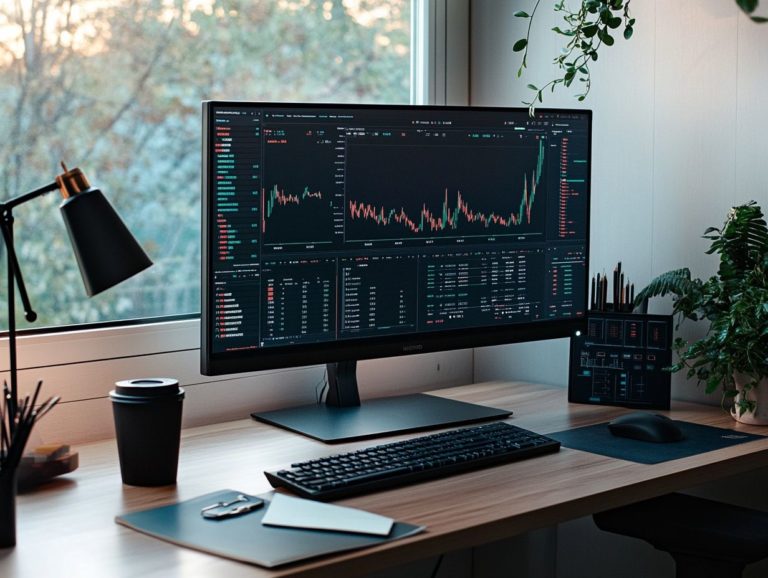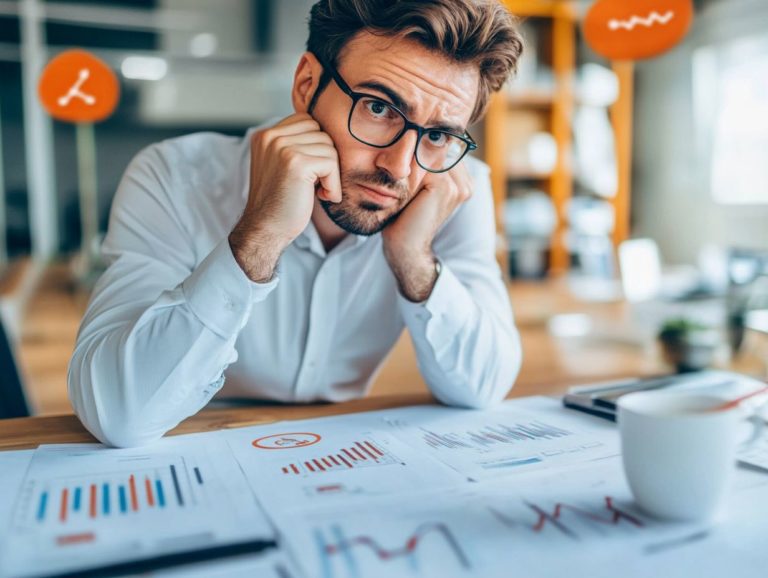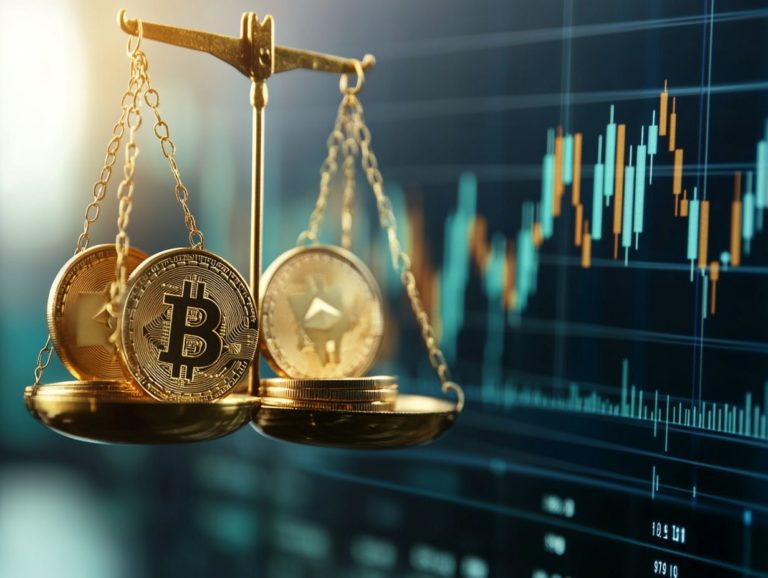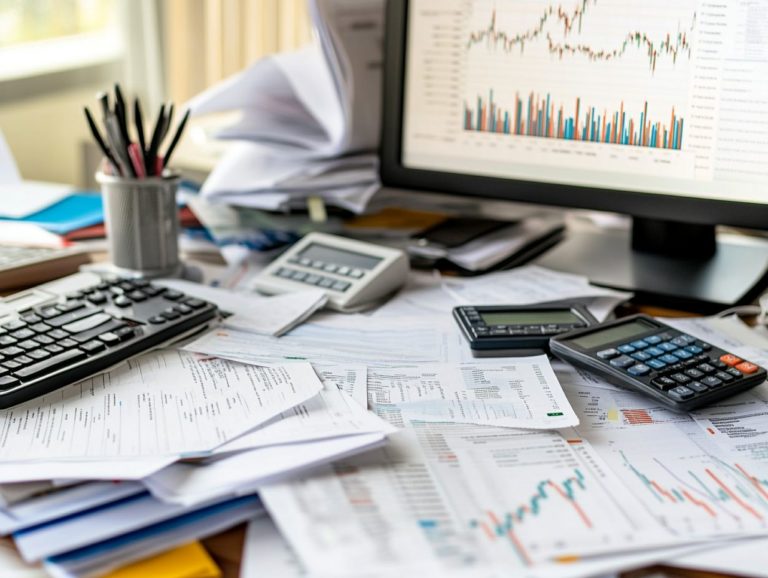5 Reasons to Invest in Physical Precious Metals
Investing in physical precious metals is increasingly capturing your attention as you seek ways to safeguard your wealth and diversify your portfolio.
With inflation on the rise and economic uncertainty looming, metals like gold and silver act as a safety net against market fluctuations. Let s dive into five compelling reasons why you should consider these tangible assets, highlighting their intrinsic value and the potential for impressive returns.
You ll also learn about the various methods of investing, the associated risks, and strategies for secure storage. Whether you re a seasoned investor or just beginning your journey, grasping the role of physical precious metals can significantly enhance your investment strategy.
Join us as we explore the benefits and considerations of this enduring investment opportunity.
Contents
- Key Takeaways:
- 1. Hedge Against Inflation
- 2. Diversify Your Portfolio
- 3. Protection Against Economic Uncertainty
- 4. Tangible Asset with Intrinsic Value
- 5. Potential for High Returns
- What Are the Different Types of Physical Precious Metals?
- How Can One Invest in Physical Precious Metals?
- What Are the Risks of Investing in Physical Precious Metals?
- How Can One Safely Store and Protect Their Physical Precious Metals?
- What Is the Role of Physical Precious Metals in a Well-Diversified Portfolio?
- What Are the Long-Term Trends and Forecasts for Physical Precious Metals?
- Frequently Asked Questions
- What are the top 5 reasons to invest in physical precious metals?
- How do physical precious metals differ from paper investments?
- What are the most common types of physical precious metals?
- What is the best way to invest in physical precious metals?
- What are the risks associated with investing in physical precious metals?
- Can investing in physical precious metals provide a steady stream of income?
Key Takeaways:
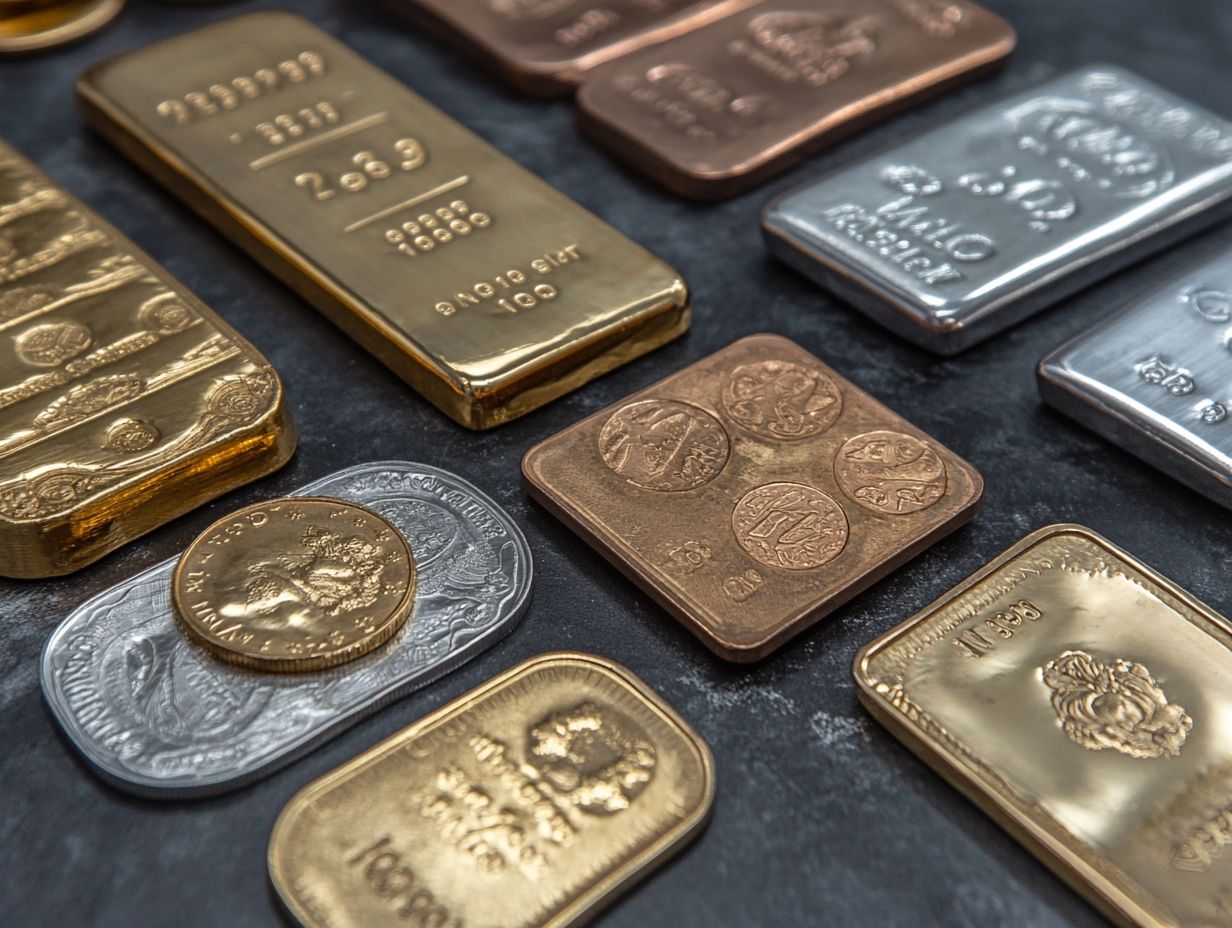
- Hedge against inflation by investing in physical precious metals, which have historically maintained their value during times of economic instability.
- Diversify your portfolio by including physical precious metals, which have a low correlation with other assets and can provide a buffer against market fluctuations.
- Protect yourself against economic uncertainty by owning physical precious metals, which serve as a safe haven asset and provide stability during times of crisis.
1. Hedge Against Inflation
Investing in precious metals like gold and silver offers you a solid hedge against inflation. This ensures your financial security even in the midst of market turbulence. It s no wonder that many investors turn to these assets to protect their wealth.
Historically, gold has proven to hold its value remarkably well. Its purchasing power often rises during high inflation periods. Take, for example, the years between 1971 and 1980. As inflation soared over 14 percent, gold prices jumped dramatically from around $35 to nearly $850 per ounce.
This substantial increase highlights how these precious metals can serve as a stronghold for your wealth, especially when government-issued money starts to falter. Many seasoned investors understand that diversifying their portfolios with gold or silver not only reduces risks but also leverages their time-tested reputation as a secure store of value in uncertain economic climates. Additionally, understanding the tax implications of precious metals in your estate plan is crucial for effective wealth management.
2. Diversify Your Portfolio
Diversifying your investment portfolio by incorporating precious metals like gold and silver can significantly enhance your overall strategy. This approach improves the liquidity of your assets and helps to reduce risks during times of economic uncertainty.
These physical commodities act as a reliable hedge against inflation and currency fluctuations, which often pose threats to traditional investments. When market volatility strikes, many investors find solace in the tangible presence of gold bars and silver; these assets typically retain their value better than stocks or bonds.
The liquidity of precious metals means you can easily buy and sell, allowing you to access cash quickly when the need arises. By including these elements in your portfolio, you cultivate a more resilient financial outlook, safeguarding against unforeseen downturns and fostering a sense of security during turbulent times.
3. Protection Against Economic Uncertainty
Gold investments act as a fortress against economic uncertainty. They provide a stability of value that often eludes traditional financial instruments. This makes them a prime choice for investors who are wary of market fluctuations.
Consider the turmoil of the 2008 financial crisis. Stock markets nosedived, and countless investors faced staggering losses. In those chaotic times, the appeal of precious metals became unmistakably clear. Collectible coins and gold bars hold intrinsic value and frequently appreciate, driven by strong demand. Additionally, understanding the tax considerations for precious metals in family trusts can further enhance your investment strategy.
Historical events, such as the Great Depression, illustrated how gold served as a safe haven for preserving wealth. In those moments of panic, savvy investors gravitated toward gold, further solidifying its status as a reliable safeguard. Similarly, silver, with its unique industrial applications and investment potential, complements your portfolio, adding additional layers of security during economic upheavals.
4. Tangible Asset with Intrinsic Value
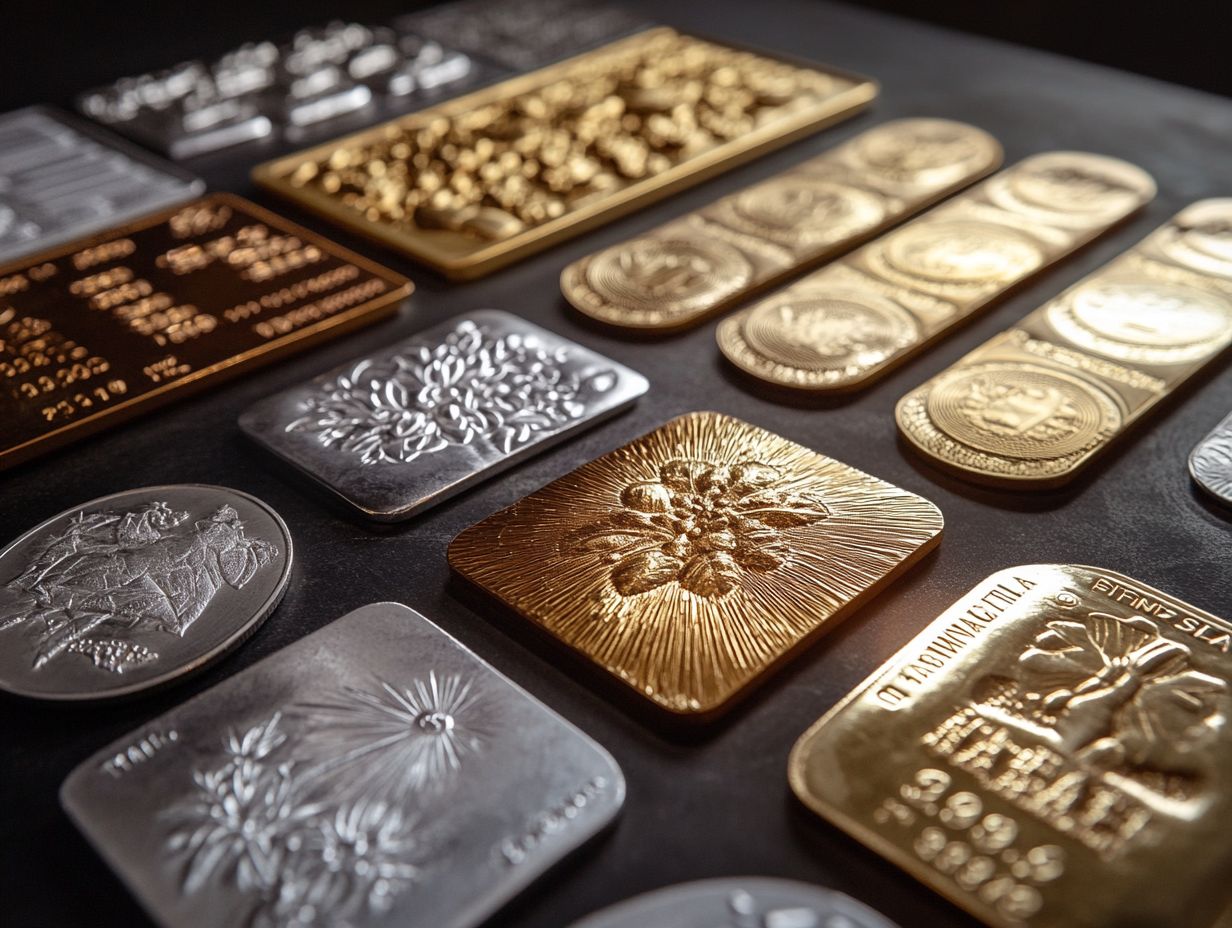
Precious metals are tangible assets that hold inherent value, like gold coins and silver investments. They offer a sense of security and reliability that digital assets often lack.
These metals, rich in history, have been recognized for centuries as a strong store of value. They are essential for preserving wealth during economic uncertainties.
Moreover, their unique physical properties contribute to significant industrial applications, especially in electronics and renewable energy, driving demand beyond their monetary worth.
The collectible nature of certain pieces adds an exciting layer to their appeal. Enthusiasts appreciate the artistry and rarity of specific coins or bars. This multifaceted value is why many investors see precious metals as a smart addition to their portfolios.
5. Potential for High Returns
Investing in precious metals like gold bars can lead to high returns, especially during times of market volatility when traditional investment strategies may struggle.
Historically, gold has shown its resilience, maintaining value even as stock markets face downturns. For instance, during the 2008 financial crisis, gold prices surged, acting as a shield against inflation and currency devaluation.
Silver often mirrors this behavior, showing impressive growth during strong market rallies while also serving as a valuable industrial asset. Your interest in these metals may peak during times of geopolitical uncertainty, further boosting their value.
By analyzing market trends and historical performance metrics, you can see that gold and silver not only serve as safe havens but also hold the potential for substantial long-term gains.
What Are the Different Types of Physical Precious Metals?
The world of physical precious metals offers a fascinating array of options, including gold, silver, platinum, palladium, and rhodium. Each has unique benefits for discerning investors like you.
Gold often serves as a safe haven during economic turbulence, known for its historical role as a reliable store of value and its excellent liquidity in the marketplace.
Silver, on the other hand, elegantly combines investment potential with industrial applications, adding versatility to your collection.
Platinum is valued for its rarity and is gaining popularity in both technology and automotive industries. Meanwhile, palladium has recently attracted attention for its crucial role in emission control systems in vehicles.
Rhodium, though perhaps less familiar, boasts remarkable scarcity and is vital for catalytic converters, enhancing its investment attractiveness.
Collectively, these metals provide you with opportunities for portfolio diversification and act as a stabilizing force against market volatility due to their intrinsic value.
How Can One Invest in Physical Precious Metals?
Investing in physical precious metals opens various avenues, whether acquiring gold in the form of bars or coins or investing in silver. Each option enhances your asset liquidity.
Selecting the right strategy is crucial. You can directly purchase bullion, invest in gold exchange-traded funds (ETFs) that track the price of precious metals and can be traded like stocks without the hassle of physical storage, or invest in collectible coins that may appreciate due to their rarity. Understanding the role of precious metals in your tax strategy is also essential. Each method has unique advantages, allowing you to tailor your approach to your specific financial objectives.
If you’re seeking long-term security, tangible assets may resonate more with you. Alternatively, if diversification interests you, ETFs might be the way to go.
It s also essential to evaluate your personal risk tolerance and the current market conditions, as these factors play a crucial role in crafting a suitable investment plan.
What Are the Risks of Investing in Physical Precious Metals?
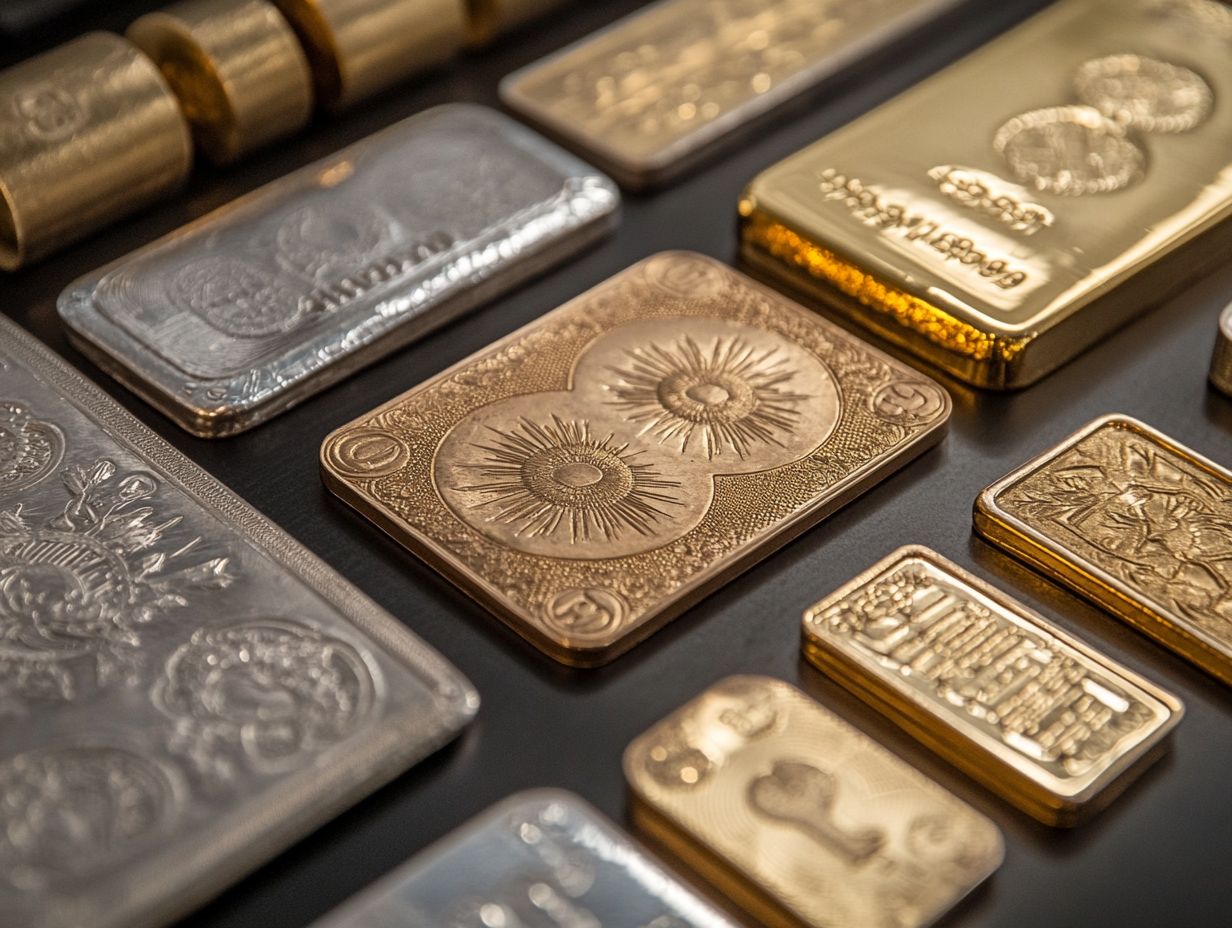
Investing in physical precious metals has many benefits, but it also comes with risks, including market volatility and potential value fluctuations during economic uncertainty.
Be aware that these assets can decrease in worth, particularly during rapid market changes. Understanding the best time to invest in precious metals is crucial. Additionally, the costs of securely storing these metals can add up, so don’t forget to include those costs in your investment plan!
Economic factors like inflation and currency stability can impact how precious metals perform. To reduce these risks, diversifying your investments, staying informed about market trends, and understanding the role of precious metals in tax-advantaged accounts creates a more balanced approach that helps safeguard your financial interests.
How Can One Safely Store and Protect Their Physical Precious Metals?
Safely storing and protecting your physical precious metals is essential for maintaining their value and ensuring liquidity, highlighting the need for secure storage solutions.
When considering your options, evaluate various methods that align with your specific needs. Home safes offer convenience and immediate access, but it s crucial to add security measures like reinforcement and fireproofing to protect these valuable items from theft or damage.
In contrast, bank safe deposit boxes provide a high level of security and insurance, though they only allow access during banking hours, which might not be ideal for everyone. Professional storage facilities are another viable option, often equipped with advanced security technologies and climate control to prevent degradation.
No matter how you store your metals, make sure to have extra security in place to protect your treasured investments.
What Is the Role of Physical Precious Metals in a Well-Diversified Portfolio?
Physical precious metals are key to a well-diversified portfolio, acting as a counterbalance to other asset classes due to their unique characteristics as physical goods.
Their intrinsic value tends to hold steady during economic downturns, serving as a safety net against inflation and currency fluctuations. By adding gold, silver, or platinum to your investment strategy, you can enhance your potential for long-term gains while minimizing the risks tied to market volatility. Additionally, understanding how to use precious metals in estate planning can further optimize your financial strategy.
These tangible assets can act as a hedge against geopolitical uncertainties, offering a level of financial security that paper assets often lack. Incorporating physical precious metals not only strengthens your portfolio’s resilience but also requires tax planning for precious metals in your portfolio, making it better prepared to navigate various market conditions.
What Are the Long-Term Trends and Forecasts for Physical Precious Metals?
Long-term trends and forecasts for physical precious metals highlight ongoing interest in gold and silver as safe-haven assets, especially during economic uncertainty.
As inflation rates climb and geopolitical tensions rise, many investors turn to these metals for stability within their portfolios. Historical performance shows that gold consistently holds its value during market downturns, acting as a buffer against financial volatility. Understanding the role of market timing in precious metals can further enhance investment strategies.
Experts indicate that as central banks worldwide continue to expand their reserves, the demand for these assets is likely to grow. Advancements in mining technology may change how much of these metals is available, influencing prices in ways that enhance the allure of investing in both gold and silver in the years ahead.
Frequently Asked Questions
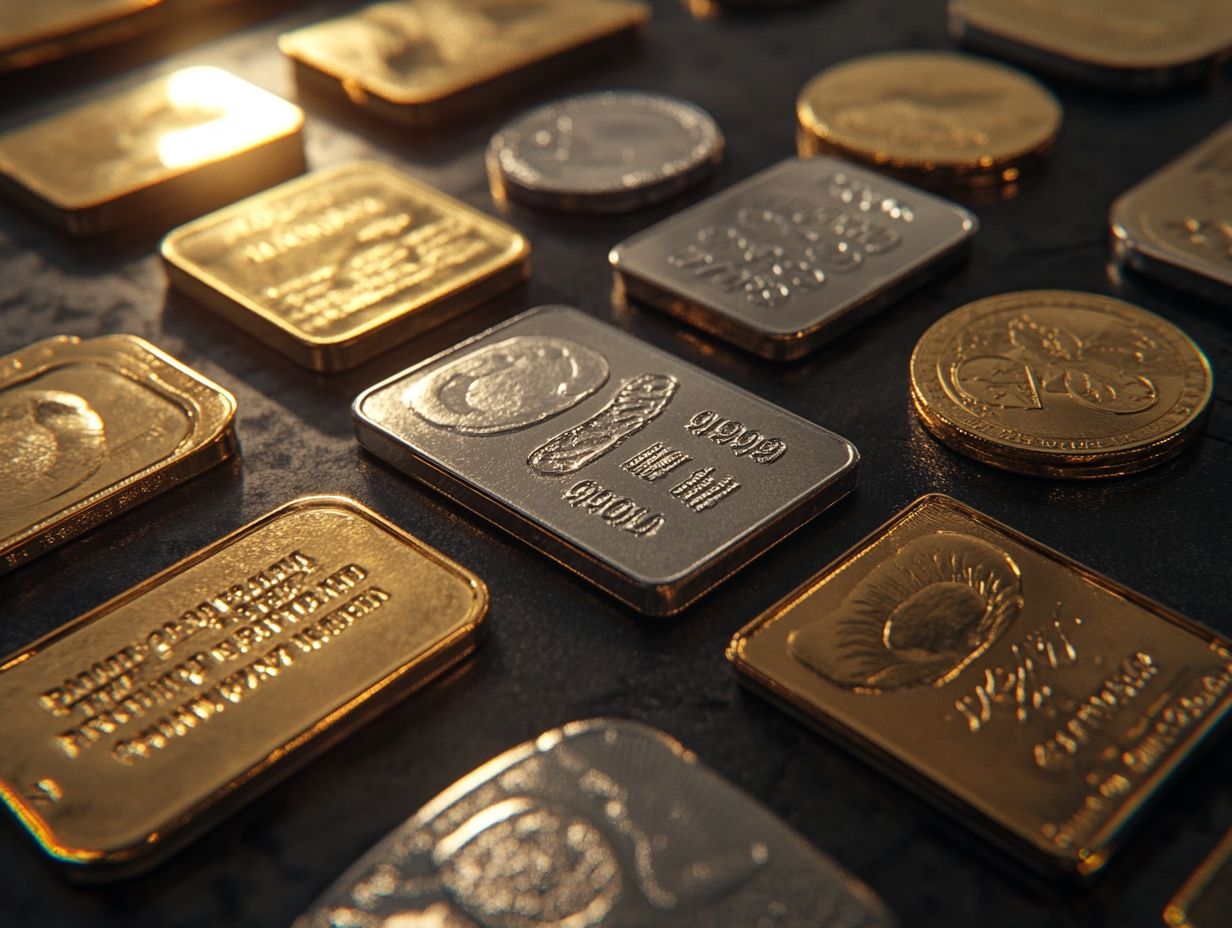
What are the top 5 reasons to invest in physical precious metals?
1. Diversification: Investing in physical precious metals, such as gold and silver, can diversify your portfolio and lower your risk.
2. Store of Value: Precious metals have served as a store of value for centuries. They are reliable investments during economic instability.
3. Inflation Hedge: Physical precious metals can act as a hedge against inflation, since their value often rises when prices increase.
4. Tangible Asset: Unlike stocks or bonds, physical precious metals are tangible assets you can hold in your hand. This provides a sense of security and ownership.
5. Potential for Capital Gains: As demand grows, your investment could significantly increase in value, especially during market swings.
How do physical precious metals differ from paper investments?
Physical precious metals are actual, tangible assets you can hold and store. In contrast, paper investments refer to shares of companies or funds that hold precious metals.
Physical precious metals offer a sense of security as they are not subject to the same risks as paper investments, such as bankruptcy or market fluctuations.
What are the most common types of physical precious metals?
The most common types of physical precious metals include gold, silver, platinum, and palladium. These metals are valued for their rarity, beauty, and industrial use, making them sought-after investments.
What is the best way to invest in physical precious metals?
The best way to invest in physical precious metals is to purchase them through a reputable dealer or broker. You can also invest in exchange-traded funds (ETFs), which are investment funds traded on stock exchanges, or by buying shares in mining companies that specialize in precious metals.
What are the risks associated with investing in physical precious metals?
Investing comes with risks. Understand them fully to protect your investment!
These risks include fluctuations in market prices, problems selling the metals quickly, and the potential for theft or loss if not properly stored. It is important to research and understand these risks before investing and to diversify your portfolio to mitigate them.
Can investing in physical precious metals provide a steady stream of income?
Investing in physical precious metals is not typically considered a source of income, as the value of these metals can fluctuate over time. However, you can increase earning potential through dividends from mining companies or interest from owning physical metal certificates.










